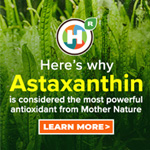
Swine flu pandemic: How will it impact Ecuador and South America vs. North America?
 Saturday, September 26, 2009 Saturday, September 26, 2009by Mike Adams, the Health Ranger Editor of NaturalNews.com (See all articles...) Tags: Ecuador, health news, Natural News |
- European Court of Justice: Healthcare professionals who promoted or administered COVID-19 vaccines are CRIMINALLY LIABLE for any harm caused
- Oncologist warns of ‘terrifyingly aggressive’ cancers in children, linked to immune suppression from COVID vaccines
- Newly released JFK files reveal Pentagon's role in creating Lyme disease and covid in the same lab
- Ancient kitchen secrets REVEALED: How garlic, ginger and green onions fight cancer and heart disease
- Britain’s descent into police state censorship: Parents raided for questioning their daughter’s school system online
- NIH study, buried for decades, reveals that Flu Shots INCREASE elderly deaths, not prevent them
- COVID-19 scandal linked to CANCER SURGE: Billionaire researcher sounds alarm
- DARPA: The shadowy innovator behind the world’s most advanced military technologies
- “Old Man in a Chair”: The COVID-19 pandemic was a carefully orchestrated scheme for global control
- Decentralize TV: Dr. Leonard Coldwell reveals shocking, heavily censored truths about CANCER, healing and the medical mafia complex
- Cinnamon plays a critical role in diabetes management
- Musk targets “strangely wealthy” lawmakers in DOGE probe, names Pelosi, McConnell, Schumer
- RFK Jr. is reforming Americans’ health: A shift in power and paradigm
- Utah governor allows ban on LGBT pride flags in public buildings and schools, will take effect without his signature
- FRAUD ALERT: Details DEMOCRATS do NOT want you to know about the $40 BILLION wasted on Fed-loaded credit cards cancelled by DOGE
- Scientists unveil breakthrough method to eliminate "Forever Chemicals" from water, transforming waste into graphene
- RFK Jr. is pushing Big Pharma ad ban - and corporate media is panicking
- Massive egg substitution recall: Bleach contamination sparks nationwide concern
- Newly released JFK files reveal Pentagon's role in creating Lyme disease and covid in the same lab
- CDC finally halts $11 billion COVID funding scam as health officials admit the ‘pandemic’ was a fraud
- Analysis: The coming economic collapse, a mass uprising and Trump's three secret weapons to halt the growing revolt
- Kiss Your Genetic Privacy Good-Bye! 23andMe Gets Green Light to Sell Your Intimate Genetic Details to Anyone They Want
- Dr. Suzanne Humphries makes bombshell appearance on Joe Rogan podcast, exposing vaccine industry deception back to POLIOMYELITIS
- DEADLY DECEPTION: How COVID vaccines increased mortality rates and why authorities hid the truth
- Woman contracts WORLD'S DEADLIEST VIRUS after unknowingly being given the WRONG VACCINE
- Oncologist warns of ‘terrifyingly aggressive’ cancers in children, linked to immune suppression from COVID vaccines
- Here are TEN all-natural ways to protect your garden without using harmful chemicals
- Black cumin seed oil emerges as a powerful ally against breast cancer and chronic inflammation
- The hidden dangers in your kitchen: How cooking methods impact diabetes, cancer and aging
- Trump's greatest betrayal so far: Accelerating Middle East wars, silencing dissent, and serving Zionist masters
- Senate Democrats deny censorship industrial complex existed, defend government's role in silencing dissent
- Sugar-free deception: Artificial sweeteners hijack hunger signals, fuel obesity epidemic, study warns
- “Independent” anti-Russia outlet MEDUZA faces COLLAPSE as US funding dries up
- NIH study, buried for decades, reveals that Flu Shots INCREASE elderly deaths, not prevent them
- The Health Ranger releases “Vaccine Zombie” song and music video, using AI-animated zombies for the music video
- Discovery of vast underground city beneath Giza pyramids challenges human history
- Newly released JFK files reveal Pentagon's role in creating Lyme disease and covid in the same lab
- California's social media censorship law struck down: A victory for free speech or a threat to online safety?
- EPA advisor admits the agency is funneling billions to climate groups ahead of Trump’s return to White House
- The Health Ranger releases “Vaccine Zombie” song and music video, using AI-animated zombies for the music video
- Dr. Mike Yeadon releases 15-minute testimony - WATCH - about genocidal intent of COVID “vaccines”
- Florida takes a stand: DeSantis proposes permanent ban on mRNA vaccine mandates
- Mike Adams releases country western hit single: Goin’ Back in Time is Comin’ Home
- “Why we influenced the 2020 elections”: Facebook files reveal the coordinated effort to bury the Hunter Biden laptop story
- Unpacking the Lies That We’ve Been Fed – new song and music video released by Mike Adams, the Health Ranger
- House Intelligence Committee calls for the ARREST and PROSECUTION of Dr. Anthony Fauci
- The pandemic as a tool for INDOCTRINATION: Understanding “The Indoctrinated Brain” by Dr. Michael Nehls
- Rep. Nancy Mace introduces bill to ban biological males from female facilities on federal property
- Mike Adams releases music poetry sensation: A Child of God
- Sugarcane extract superior to cholesterol-lowering drugs?
- Survival 101: Effective EMF blocking techniques
- Michigan sheriff announces criminal investigation into 2020 election crimes, Dominion Voting Systems
- Peter Rost exposes Big Pharma corruption in his book “The Whistleblower: Confessions of a Healthcare Hitman”
- Migrants are taking advantage of recent hurricanes to scam residents and loot their homes
- Red Cross issues warning to stop blood plasma donations from vaccinated people
- Scientists confirm: GENIUS brain function can be spontaneously unleashed in humans without any apparent cause
- EPA advisor admits the agency is funneling billions to climate groups ahead of Trump’s return to White House
- HYSSOP: What research reveals about the health benefits of this ancient holy herb
- Two containers with completed ballots fall out of truck in Florida
- Fully vaccinated about to see “tsunami” of illness and death, warns virologist
- Global leaders unite to clamp down on “misinformation” with UN-backed Cascais Declaration
- BREAKING: 2025 NDAA authorizes mandatory military draft of WOMEN across America… as Pentagon pursues global NUCLEAR war with both Russia and China at the same time
- Michael Yon warns of a ZIONIST TAKEOVER in Trump’s second administration
- BOMBSHELL: DNA testing kits are a SCAM to develop ethnic-specific bioweapons
- Ozempic and Wegovy weight loss drugs are injectable LIZARD VENOM PEPTIDES that may unleash a devastating wave of organ failure… side effects align with symptoms of SNAKE BITES
- Israeli soldiers accused of even more torture and abuse in the West Bank
- These 13 countries just signed an agreement to engineer a global FAMINE by destroying food supply
- NASA admits that climate change occurs because of changes in Earth’s solar orbit, and NOT because of SUVs and fossil fuels
- RFK Jr. clears key hurdle: Sen. Susan Collins backs controversial HHS nominee, signaling a new era for health policy
- Sermon 30: How Jesus reveals Caesar’s FAKE CURRENCY and FALSE AUTHORITY
- Coriander seeds: Ancient medicine backed by modern science
- Arizona officials claim Maricopa County needs 10-13 days to tabulate results of the election
When considering the potential impact on Ecuador, the most important thing to realize about swine flu is that the number of people dying from swine flu exposure is quite small. This indicates the current mild state of the virus, indicating that unless it mutates into a significantly more virulent strain, the total number of fatalities will likely remain quite low (perhaps 75,000 or so in the U.S., making it roughly 2.5 times more deadly than a typical flu season if you believe CDC numbers).
Those currently dying from the swine flu in the United States tend to have two things in common:
#1) Obesity
#2) Severe vitamin D deficiency
Both of these conditions are rampant in North America, and they both contribute to greatly increased risk of a fatality from the swine flu. The mechanisms are fairly straightforward: Obesity is an inflammatory condition that contributes to respiratory inflammation typically leading to a bacterial pneumonia that kills many victims. Vitamin D deficiency creates a physiological environment in which the virus can spread easily while inciting the "cytokine storm" response that leads to fatal respiratory infections.
North America is unique in the world in suffering from very high rates of both obesity and vitamin D deficiency. South America, on the other hand, has far lower rates of both. In Ecuador (and Vilcabamba in particular), children, teens and adults still spend a considerable number of hours playing outdoors. Volleyball games are part of the culture there, and due to the near-perfect climate in many areas, a considerable portion of the population spends time walking outdoors (to the shop, to the farm, to the Sunday market, to church, etc.). Many people also don't own vehicles, so walking or bicycling is still a common form of transportation in many areas.
The upshot of all this is that few Ecuadorians are vitamin D deficient. And relatively few are overweight or obese. This makes the risk of a runaway swine flu pandemic extremely small in Ecuador. Other countries like Brazil and Peru have similarly low risk due to the enhanced health and outdoor lifestyles of their populations.
In South America, there also remains a culture of eating many locally-grown plants (in home gardens, etc.) and medicinal herbs (such as Hierba Luisa tea or local Ecuadorian Horchata, which is made from as many as 30 different medicinal plants). The anti-viral properties of these herbs and plants are quite strong, and this provides the people of Ecuador with natural protections against many forms of influenza. Simply eating and drinking the local foods and beverages is, all by itself, a form of medicinal protection against swine flu.
Increased risk in the cities
Large cities in Ecuador and Peru -- notably Guayaquil and Lima -- would be the likely places where swine flu could take hold in those countries. This could be due to a combination of factors, namely the "indoor" lifestyle of city dwellers and the high population densities there.Public sanitation in South America is also not up to North American standards, so there could be additional spread of the swine flu virus through unclean food handling, for example. The response to the swine flu in cities such as Guayaquil or even Quito would likely be much like the Mexico City response: A cancelling of public events and the distribution of N95 masks to help prevent further spread.
In my opinion, however, these actions are largely unnecessary. The virus is now so widespread that containment is not an effective strategy. Virtually everyone living on the planet can assume they will be exposed to the virus sooner or later, and the key strategies now should focus on surviving exposure (which is very easy to do).
Vaccinations in Ecuador and South America
Unless there is a significant mutation in the virus -- which is always possible -- the current strain of H1N1 circulating around the world does not seem to pose any serious threat to the health of those living in Ecuador and South America. The greater threat, it seems, is from the vaccine itself.Should a vaccine be mandated in Ecuador, it would like cause far more fatalities than the swine flu itself. By my calculations, 200,000 people would have to be injected with the swine flu vaccine to prevent one death (https://www.naturalnews.com/026955_swine_flu_...). And yet injecting 200,000 people with the vaccine is likely to cause more than one fatality from the side effects of the vaccine, meaning that vaccinations are likely to produce a net loss of life.
This is why, based on what I've researched about the swine flu and the vaccine, Ecuador would be far better served to simply skip mandatory vaccine injections and let natural immunity conquer the virus. Given the healthy status of the Ecuadorian people, the country has a strong natural advantage compared to places like the United States where vitamin D deficiencies are rampant.
A mandatory vaccination campaign would also be impossible to enforce in Ecuador. Far too many families live in remote areas to be effectively reached by vaccines (and what's the point if they're so remote anyway?). Furthermore, many Ecuadorian families live on very low incomes and the cost of an additional vaccine for every child would be prohibitive -- even at $5 per vaccine. If the government gave away the vaccine shots for free and made compliance voluntary, it would probably see a fair amount of compliance in the cities, but not in the rural areas of Ecuador (where the virus is virtually no risk anyway).
Quarantine and containment
There is a potential risk of small towns or cities being temporarily quarantined in Ecuador following the discovery of swine flu in the town populations. Ecuador is rugged country, and many cities or towns are connected by only a few key roads. Those roads could be very easily blocked by law enforcement in a quarantine situation, effectively cutting off small towns from the big towns.For this reason, those who currently live in small towns in Ecuador (such as Vilcabamba) would do well to engage in some preparedness efforts just in case a transportation disruption is put in place. This means storing extra fuel for vehicles or generators, extra food and perhaps some water and basic medical supplies. Where I live in Ecuador at Hacienda San Joaquin, this is all very easy, as there's an abundance of food and water readily available right out your front door.
Most people in Ecuador are extremely resilient and adaptable, and during the rainy season, the rural populations deal with power outages or water outages on a regular basis. So disruptions in basic infrastructure are unlikely to impact rural Ecuadorians in any significant way. Only the cities are at any real risk of suffering any negative effects from such disruptions.
Those living in rural Ecuador, however, would do well to plan for transportation isolation just in case.
Summary
Overall, the risk of the current swine flu pandemic generating high fatalities in Ecuador is remarkably small. The health and vitamin D status of the population gives Ecuador a strong natural defense against such pandemics, and the resilience of the population as a whole means that any significant disruptions in infrastructure would be relatively well managed.There is some risk, however, that things could change as follows:
• The virus could mutate into a much more virulent strain that somehow bypasses the health advantages currently held by Ecuadorians.
• The virus could mutate into a form that could make Ecuadorians more genetically susceptible to infection -- but even that isn't homogenous, as the genotype of the current Ecuadorian population is largely a combination of native regional people and Spanish immigrants.
• The government could overreact to the swine flu by initiating mandatory vaccine campaigns, "infection checkpoints" on major roads or other strategies to try to control the spread of the virus. These are unlikely but within the realm of possibility.
Barring those three possibilities, my estimation is that this season's swine flu impact on Ecuador and most of South America will be relatively mild. In fact, it looks to me like developing nations living closer to the equator will be far better prepared to handle this pandemic than first-world nations who are relying solely on vaccines. Sunlight and vitamin D is far more effective at stopping a pandemic than vaccines and pharmaceuticals.
Editor's Note: I'm writing this from the Hacienda San Joaquin in Vilcabamba, Ecuador, which is considered by many to be the best land in the Americas for growing food and living green. Abundant food, water, sunshine and soils are at your doorstep. Learn more by contacting Joe Simonetta at www.VilcabambaHomes.com
Ecuador at FETCH.news
Get independent news alerts on natural cures, food lab tests, cannabis medicine, science, robotics, drones, privacy and more.
 About the author:Mike Adams (aka the "Health Ranger") is a best selling author (#1 best selling science book on Amazon.com) and a globally recognized scientific researcher in clean foods. He serves as the founding editor of NaturalNews.com and the lab science director of an internationally accredited (ISO 17025) analytical laboratory known as CWC Labs. There, he was awarded a Certificate of Excellence for achieving extremely high accuracy in the analysis of toxic elements in unknown water samples using ICP-MS instrumentation. Adams is also highly proficient in running liquid chromatography, ion chromatography and mass spectrometry time-of-flight analytical instrumentation.
About the author:Mike Adams (aka the "Health Ranger") is a best selling author (#1 best selling science book on Amazon.com) and a globally recognized scientific researcher in clean foods. He serves as the founding editor of NaturalNews.com and the lab science director of an internationally accredited (ISO 17025) analytical laboratory known as CWC Labs. There, he was awarded a Certificate of Excellence for achieving extremely high accuracy in the analysis of toxic elements in unknown water samples using ICP-MS instrumentation. Adams is also highly proficient in running liquid chromatography, ion chromatography and mass spectrometry time-of-flight analytical instrumentation.
Adams is a person of color whose ancestors include Africans and Native American Indians. He's also of Native American heritage, which he credits as inspiring his "Health Ranger" passion for protecting life and nature against the destruction caused by chemicals, heavy metals and other forms of pollution.
Adams is the founder and publisher of the open source science journal Natural Science Journal, the author of numerous peer-reviewed science papers published by the journal, and the author of the world's first book that published ICP-MS heavy metals analysis results for foods, dietary supplements, pet food, spices and fast food. The book is entitled Food Forensics and is published by BenBella Books.
In his laboratory research, Adams has made numerous food safety breakthroughs such as revealing rice protein products imported from Asia to be contaminated with toxic heavy metals like lead, cadmium and tungsten. Adams was the first food science researcher to document high levels of tungsten in superfoods. He also discovered over 11 ppm lead in imported mangosteen powder, and led an industry-wide voluntary agreement to limit heavy metals in rice protein products.
In addition to his lab work, Adams is also the (non-paid) executive director of the non-profit Consumer Wellness Center (CWC), an organization that redirects 100% of its donations receipts to grant programs that teach children and women how to grow their own food or vastly improve their nutrition. Through the non-profit CWC, Adams also launched Nutrition Rescue, a program that donates essential vitamins to people in need. Click here to see some of the CWC success stories.
With a background in science and software technology, Adams is the original founder of the email newsletter technology company known as Arial Software. Using his technical experience combined with his love for natural health, Adams developed and deployed the content management system currently driving NaturalNews.com. He also engineered the high-level statistical algorithms that power SCIENCE.naturalnews.com, a massive research resource featuring over 10 million scientific studies.
Adams is well known for his incredibly popular consumer activism video blowing the lid on fake blueberries used throughout the food supply. He has also exposed "strange fibers" found in Chicken McNuggets, fake academic credentials of so-called health "gurus," dangerous "detox" products imported as battery acid and sold for oral consumption, fake acai berry scams, the California raw milk raids, the vaccine research fraud revealed by industry whistleblowers and many other topics.
Adams has also helped defend the rights of home gardeners and protect the medical freedom rights of parents. Adams is widely recognized to have made a remarkable global impact on issues like GMOs, vaccines, nutrition therapies, human consciousness.
In addition to his activism, Adams is an accomplished musician who has released over a dozen popular songs covering a variety of activism topics.
Click here to read a more detailed bio on Mike Adams, the Health Ranger, at HealthRanger.com.
Take Action: Support Natural News by linking to this article from your website
Permalink to this article:
Embed article link: (copy HTML code below):
Reprinting this article:
Non-commercial use OK, cite NaturalNews.com with clickable link.
Follow Natural News on Facebook, Twitter, Google Plus, and Pinterest
Science News & Studies
Medicine News and Information
Food News & Studies
Health News & Studies
Herbs News & Information
Pollution News & Studies
Cancer News & Studies
Climate News & Studies
Survival News & Information
Gear News & Information
News covering technology, stocks, hackers, and more



"Big Tech and mainstream media are constantly trying to silence the independent voices that dare to bring you the truth about toxic food ingredients, dangerous medications and the failed, fraudulent science of the profit-driven medical establishment.
Email is one of the best ways to make sure you stay informed, without the censorship of the tech giants (Google, Apple, Facebook, Twitter, YouTube, etc.). Stay informed and you'll even likely learn information that may help save your own life."
–The Health Ranger, Mike Adams













































